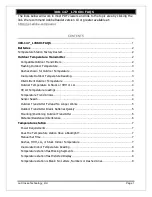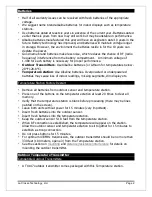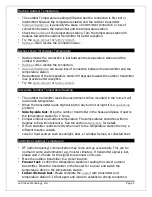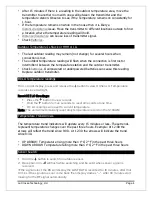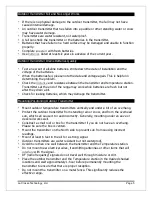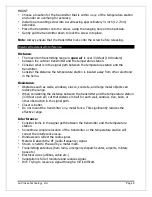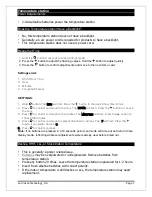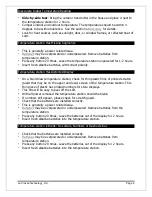
La Crosse Technology, Ltd.
Page 6
MOUNT
•
Choose a location for the transmitter that is within
and under an overhang for accuracy.
•
Install one mounting screw into a wall leaving approximately ½ inch (12.7mm)
extended.
•
Place the transmitter onto the screw, using the hanging hole on the backside.
•
Gently pull the transmitter down to lock the screw into place.
Note
: Always ensure that the transmitter locks onto the screw before releasing.
Distance/Resistance/Interference
Distance
:
•
The maximum transmitting range in
open air
is over 330-feet (100 meters)
between the outdoor transmitter and the temperature station.
•
Consider what is in the signal path between the temperature station and the
transmitter.
•
Consider the distance the temperature station is located away from other electronic
in the home.
Resistance
:
•
Obstacles such as walls, windows, stucco, concrete, and large metal objects can
reduce the range.
•
When considering the distance between the transmitter and the temperature station
(330 feet open air) cut that distance in half for each wall, window, tree, bush, or
other obstruction in the signal path.
•
Closer is better.
•
Do not mount the transmitter on a metal fence. This significantly reduces the
effective range.
Interference:
•
Consider items in the signal path between the transmitter and the temperature
station.
•
Sometime a simple relocation of the transmitter or the temperature station will
correct the interference issue.
•
Windows can reflect the radio signal.
•
Metal will absorb the RF (radio frequency) signal.
•
Stucco is held to the wall by a metal mesh.
•
Transmitting antennas (ham radio, emergency dispatch center, airports, military
base etc.)
•
Electrical wires (utilities, cable etc.)
•
Vegetation is full of moisture and reduces signal.
•
Dirt: Trying to receive a signal through a hill is difficult.

